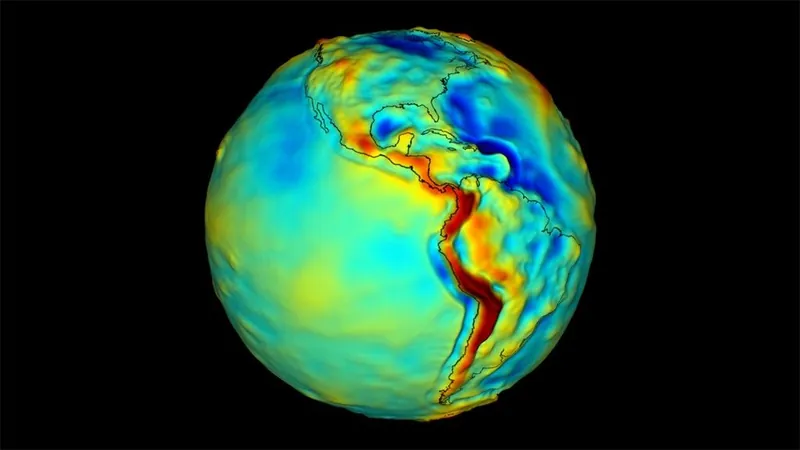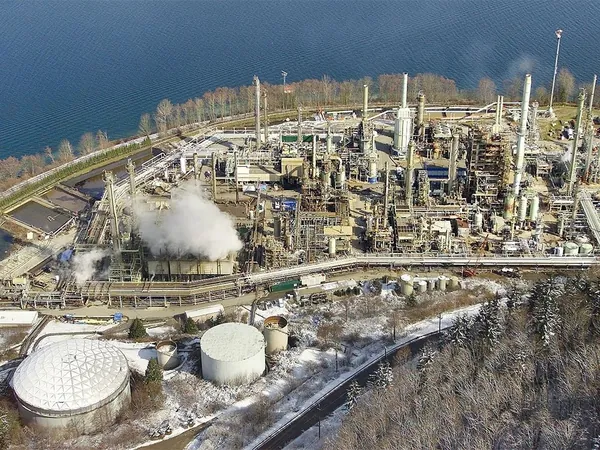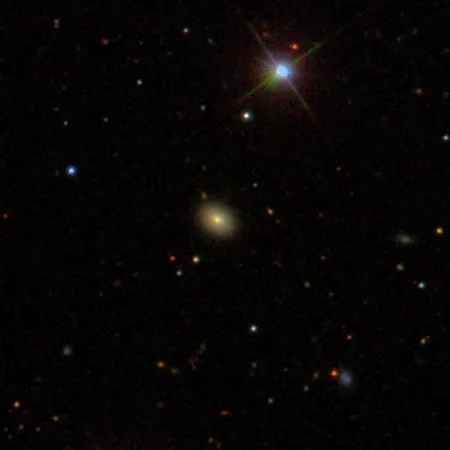
NASA's Quantum Gravity Sensor: A Game Changer for Earth Observation!
2025-04-17
Author: Liam
In a groundbreaking initiative, NASA is set to launch a transformative quantum sensor into space, poised to redefine our understanding of Earth's gravity with unprecedented accuracy. Known as the Quantum Gravity Gradiometer Pathfinder (QGGPf), this innovative technology marks a monumental advancement in Earth science, planetary exploration, and the realm of quantum physics.
Harnessing the unique behavior of ultra-cold atoms, this mission—backed by NASA’s Earth Science Technology Office—promises exciting new methods for mapping underground water sources, natural resources, and geological movements—all from orbit.
The Importance of Gravity: The Invisible Force That Shapes Our World
While we often perceive gravity as a constant, it varies subtly across the globe. This variability is influenced by various geologic processes, from tectonic shifts to the movements of groundwater and the melting of glaciers.
By tracking these nuanced gravitational changes, scientists can uncover hidden features beneath Earth’s surface—such as vast aquifers, oil reserves, and mineral deposits.
Quantum Gravity Gradiometry: How Does It Work?
At the heart of the QGGPf’s cutting-edge technology are gravity gradiometers, which measure gravitational differences between two points. The QGGPf specifically employs clouds of ultra-cold rubidium atoms, chilled to near absolute zero, allowing these particles to demonstrate remarkable wave-like properties.
By noting tiny differences in acceleration between these clouds as they fall freely, scientists can pinpoint anomalies in Earth’s gravity field, revealing diverse subsurface features and resource distributions.
The Atomic Advantage: Why This Technology Matters
Opting for atoms as test masses provides crucial benefits. Atoms are stable and less susceptible to environmental disruptions compared to traditional mechanical sensors, making them ideal for consistent, long-term measurements in space.
The QGGPf's compact design—measuring just 0.3 cubic yards and weighing about 275 pounds—shows remarkable advancements in miniaturization. Unlike previous gravity-measuring tools, which required entire fleets of satellites, this mission will function effectively within a single unit.
Astonishingly, initial estimates suggest that quantum sensors like the QGGPf could be ten times more sensitive than their conventional counterparts.
A Mission That Sets New Precedents
Targeted for launch later this decade, QGGPf will be the first of its kind to operate in space. While primarily aimed at validating its technology, this mission could herald exciting new prospects in remote sensing and space science.
This project exemplifies the strength of collaboration: NASA is joining forces with quantum tech innovators AOSense and Infleqtion for sensor hardware, while the Goddard Space Flight Center partners with Vector Atomic to refine the instrument’s laser systems.
If successful, the QGGPf mission could revolutionize everything from natural resource management to climate studies and space exploration. By showcasing quantum gravity sensing capabilities in orbit, NASA and its partners are paving the way for future missions designed to analyze other celestial bodies and even uncover extraordinary physics phenomena.









 Brasil (PT)
Brasil (PT)
 Canada (EN)
Canada (EN)
 Chile (ES)
Chile (ES)
 Česko (CS)
Česko (CS)
 대한민국 (KO)
대한민국 (KO)
 España (ES)
España (ES)
 France (FR)
France (FR)
 Hong Kong (EN)
Hong Kong (EN)
 Italia (IT)
Italia (IT)
 日本 (JA)
日本 (JA)
 Magyarország (HU)
Magyarország (HU)
 Norge (NO)
Norge (NO)
 Polska (PL)
Polska (PL)
 Schweiz (DE)
Schweiz (DE)
 Singapore (EN)
Singapore (EN)
 Sverige (SV)
Sverige (SV)
 Suomi (FI)
Suomi (FI)
 Türkiye (TR)
Türkiye (TR)
 الإمارات العربية المتحدة (AR)
الإمارات العربية المتحدة (AR)